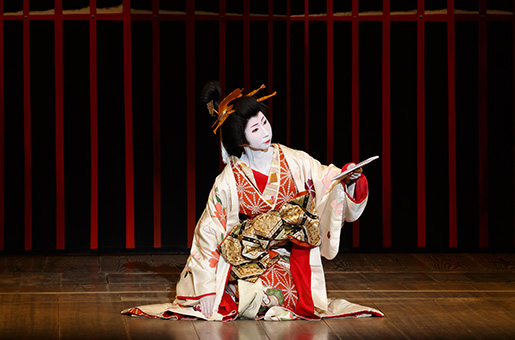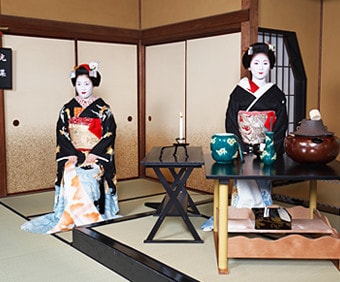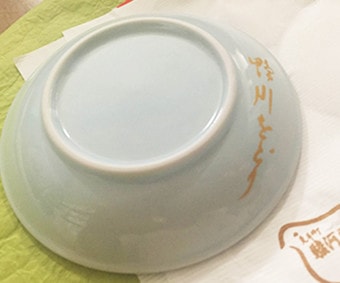The Kamogawa Odori, which brings beautiful color to the fresh Kyoto greenery, began in 1872 (Meiji 5 in the Japanese calendar) as a part of the 1st Kyoto Expo, in the hopes of attracting tourists after the capital of Japan had been moved from Tokyo to Kyoto. It has continued for over 100 years, and this magnificent stage has become an annual event in Kyoto that boasts of the city’s refined elegance.
The performance is divided into two parts – the first part is a beautiful and playful dance drama, and the second part is a traditional dance referred to as “odori emaki” – a moving picture scroll.

From the 181st Kamogawa Odori, Part 2 – “Hana no Irodori Kyonanakomachi”
Tea Room


A tea ceremony is held on the 4th floor of the venue while the Kamogawa Odori is in session. In the tea room, you can enjoy the skill of the geisha before the performance. After enjoying the tea and cakes, you can take the cake dish home with you as a souvenir.
The Kamogawa Odori tea ceremony will be held using tables and chairs. This method originated in 1872, when Master Gengensai of the Urasenke house considered how to entertain foreign guests during exhibitions at his retirement palace. Now, the Urasenke method serves as the model for the various tea ceremonies that utilize and table and chairs that are popular in the current age.
The Kamogawa Odori was also established in 1872, so for further enjoyment of the feel of the Odori dance, in the tea room you can enjoy a tea ceremony together with geisha and maiko for a look that is purely Kyoto.
Performance Information

-
- Genji Monogatari
No. 1 Murasaki No Kumo ni moyureba
-
No. 2 Ushiromi Zuki
- Genji Monogatari

- May 1 (Mon) – May 24 (Wed), 2024 (24 days)
12:30/14:20/16:10 
- Special Seats w/Tea Ticket: 7,000 yen
Special Seats Ticket: 6,000 yen
Regular Seats Ticket: 4,000 yen
Tea Ticket: 1,200 yen 
- Nakagyo-ku, Pontocho, Sanjo Sagaru, Kyoto Pontocho Kaburenjo
(Click here for access)
Previous Performances
| No. | Era | Year | Performance | Creator | Comments |
|---|---|---|---|---|---|
| 184 | Reiwa | 5 | 春の風 恋のいたづら | 川崎哲男 | |
| 寿百五十年先斗町 花の四季 | |||||
| 183 | Reiwa | 4 | 先斗町四季絵姿 | 川崎哲男 | |
| 182 | Reiwa | Gannen (1) | わかよたれそ 筒井筒 | 戸部和久 | 新元号記念 |
| 艶姿祝新御代祭 | |||||
| 181 | Heisei | 30 | W・シェイクスピア 真夏の夜の夢より~空想い | 戸部和久(脚本) | |
| 花姿彩京七小町 | 駒井義之 | ||||
| 180 | Heisei | 29 | 源平女人譚 | 今井豊茂 | |
| 八千代壽先斗町 | |||||
| 179 | Heisei | 28 | 源氏物語―葵― | 海津 勝一郎 | |
| 道中双六―東下り― | 川崎 哲男 | ||||
| 178 | Heisei | 27 | 芙蓉西遊記 | 今井豊茂 | |
| 艶姿花挿櫛 | |||||
| 177 | Heisei | 26 | 鏡山藤花繪 | 今井豊茂 | |
| 176 | Heisei | 25 | 女舞忠臣蔵 | 海津勝一郎(再演) | |
| 175 | Heisei | 24 | 源平雪月花 | 海津勝一郎(Replay) | |
| 京都春宵 | |||||
| → List of Previous Performances | |||||






